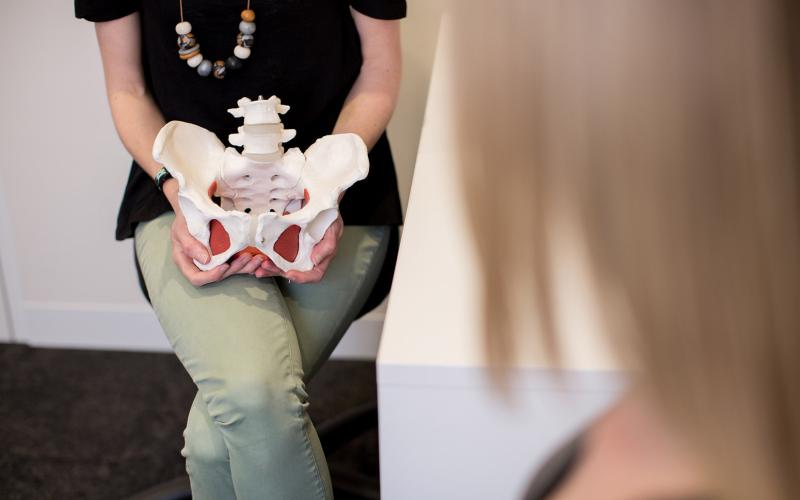Prolapse - your questions answered
Pelvic organ prolapse is common and 1 in 2 women who have had a baby will have some degree of prolapse in their lifetime. 10% of women over the age of 80 will have had surgery for prolapse.

Pelvic organ prolapse occurs when there is downward movement of one or more pelvic organs (bladder, bowel or uterus), into the vagina. This can be present in varying degrees with some causing mild or even no symptoms (some women might not even be aware they have a prolapse until it is noted by a GP with a routine PAP smear), through to severe prolapse where symptoms significantly impact quality of life.
Common prolapse symptoms include a heaviness or bulge in the vagina or a dragging sensation in the lower abdomen. Difficulty emptying the bladder or bowel, urinary urgency, difficulty inserting a tampon are also common symptoms. Prolapse symptoms are typically more noticeable towards the end of the day or on days where you are on your feet for longer or doing more strenuous activities.
The cause of prolapse is often multifactorial and risk factors include; vaginal births, constipation and straining, chronic cough, weight gain, menopause and low oestrogen states. Prolapse may also be worsened by daily activities and exercise which increase pressure in your abdomen such as lifting activities, bending, squatting, jumping and running.
So what should I do if I have prolapse symptoms? How is it managed?
In the first instance, you should see your GP to confirm the presence of a prolapse. If this is confirmed and you have a mild to moderate prolapse, they will likely refer you to see a pelvic floor physiotherapist.
There is strong evidence that conservative management including pelvic floor muscle training can reduce the symptoms and severity of prolapse. Based on this research, international guidelines recommend that first line management of prolapse should involve pelvic floor muscle training and modification of lifestyle factors that may contribute to prolapse.
A pelvic floor physiotherapist can assess your pelvic floor muscles to ensure that you are doing your exercises with perfect technique and that you are doing the type and amount of exercises that are right for you. They will also reassess and progress your exercises, keeping you motivated for the duration that it takes to strengthen them- often 3-6 months!
A pelvic floor physiotherapist will also look at other factors that may be contributing to your prolapse and help to modify these. This may include correcting constipation and straining, treating bladder symptoms, prescribing general strength exercises and giving advice regarding daily activities and general exercise. While some types of exercise might not be appropriate if you have a prolapse, it is still important that you keep active and there will be lots that you can do.

A vaginal support pessary can also be an excellent way to manage prolapse without surgery. These devices that come in a range of shapes and sizes can be inserted into the vagina (you learn how to do this yourself) to support your prolapse, alleviate your symptoms and allow you to get on with your daily activities. These can be fitted by some physiotherapists, GP’s and gynaecologists. At Flex Rehabilitation Clinic, all of our pelvic health physiotherapists are trained to be able to fit pessaries.
Of course surgery can also be an option to manage prolapse however unfortunately prolapse can in some cases recur after having surgery. Guidelines suggest that surgery should be reserved for severe or complex prolapse or in cases where symptoms have not improved sufficiently with conservative management. However if you have strengthened your pelvic floor muscles and corrected any prolapse risk factors it will only aid your recovery if you do have surgery.